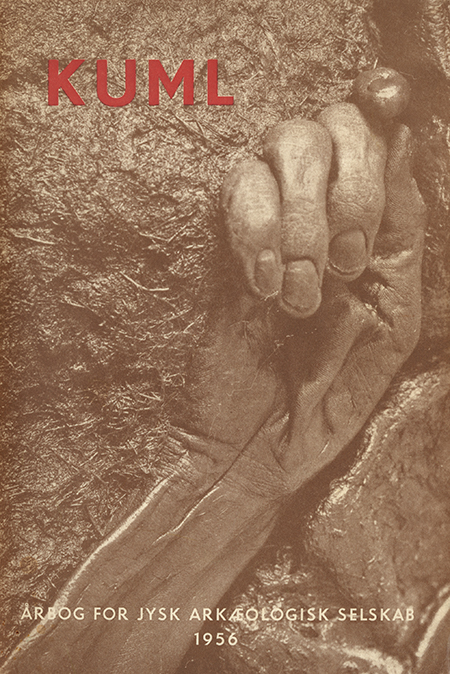Forhistoriske fingeraftryk
DOI:
https://doi.org/10.7146/kuml.v6i6.97295Nøgleord:
Grauballe, peat-bog body, moselig, fingeraftryk, fingerprintsResumé
Prehistoric Fingerprints
A fingerprint specialist is from time to time faced with the problem of identifying a dead body. Considering how difficult this task can be, even in the case of a person dead for only a short time, my feelings may be imagined when, in the spring of 1952, I turned the magnifying glass onto the right band of Grauballe Man and saw that, on at least part of the band, the papillary-ridge pattern was clearer than on my own.
It must, however, be recorded that the first newspaper reports of this aspect of the peat-bog body were considerably exaggerated. Best preserved were the coarse ridges on the flat of the right band and foot, where even the flexion creases were in places very clear. Of the actual digital papillary patterns ("fingerprints") those of the left band could not be read as the fingers were too mummified, while in the case of the right hand the index, ring and little fingers were in the same condition. The thumb and middle finger, however, showed by contrast a very clear picture. The pattern of the right thumb could be read off directly as a whorl, a so-called twin loop pattern, while the middle finger of the right band proved to contain an ulnar-loop pattern.
The necessity of preserving the posture of the body unchanged prevented the usual "rolling" of the pattern of the two fingers. lnstead the right band and foot were photographed, and partial Negocoll/Hominite casts of the sole of the foot and the palm of the band, the great toe of the left foot and the two fingers of the right band were taken. Neither the photographs nor the casts are of high quality. The necessity of keeping the body damp until conservation could commence made the result less sharp and introduced unavoidable reflection. There can, however, be no doubt that, had fingerprint registers been kept at the period when Grauballe Man lived, it would today be possible to give him a name - and that alone on a basis of no less than four skin areas: The flat of the right foot, the hypothenar (outer hall) of the right hand, the thenar (hall of the thumb) of the right hand - where moreover there is a clear commencement to a loop on the first interdigital - and finally the area around the radial delta of the thumb. Unfortunately the discovery of systematic fingerprint recording is less than a hundred years old …
There is nothing unusual about the fingerprints obtained. The present author possesses the same type of pattern on the right thumb and middle finger - without therefore claiming any direct descent from Grauballe Man. Among the present-day Danish population the two patterns occur with a frequency of 11.2 and 68.3 % respectively.
With some degree of uncertainty, and against the evidence of the somewhat worn appearance of the nails, it may be said that the hand surfaces of Grauballe Man do not bear signs of hard manual labour, as experience shows that the papillary ridges in such cases have a noticable wear, making direct photography difficult or impossible.
Continued conservation has unavoidably resulted in a deterioration of the papillary patterns, the ridges being now flatter and less sharp than immediately after discovery. The picture is still, however, readable, and Grauballe Man still forms the most noteworthy specimen submitted to me during many years experience as a fingerprint specialist.
C. H. Vogelius Andersen
Downloads
Publiceret
Citation/Eksport
Nummer
Sektion
Licens
Fra og med årgang 2022 er artikler udgivet i Kuml med en licens fra Creative Commons (CC BY-NC-SA 4.0).
Alle tidligere årgange af tidsskriftet er ikke udgivet med en licens fra Creative Commons.


